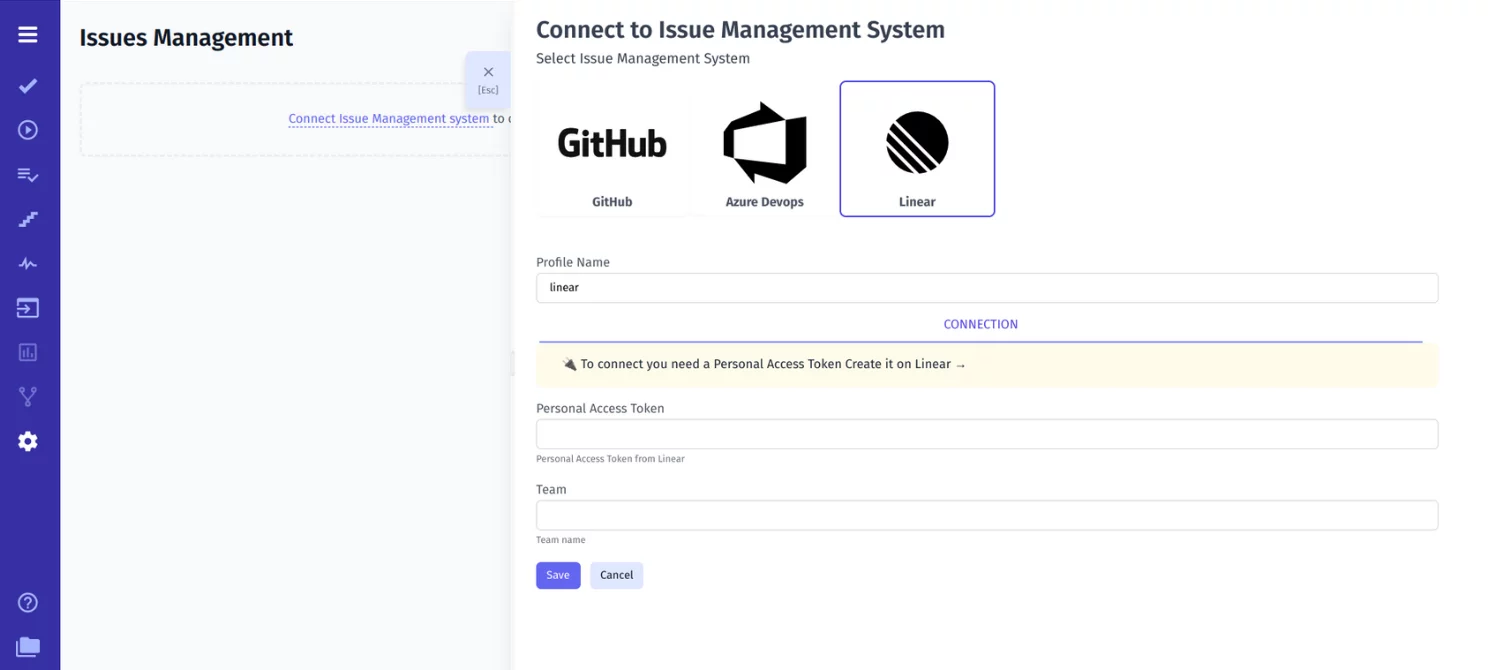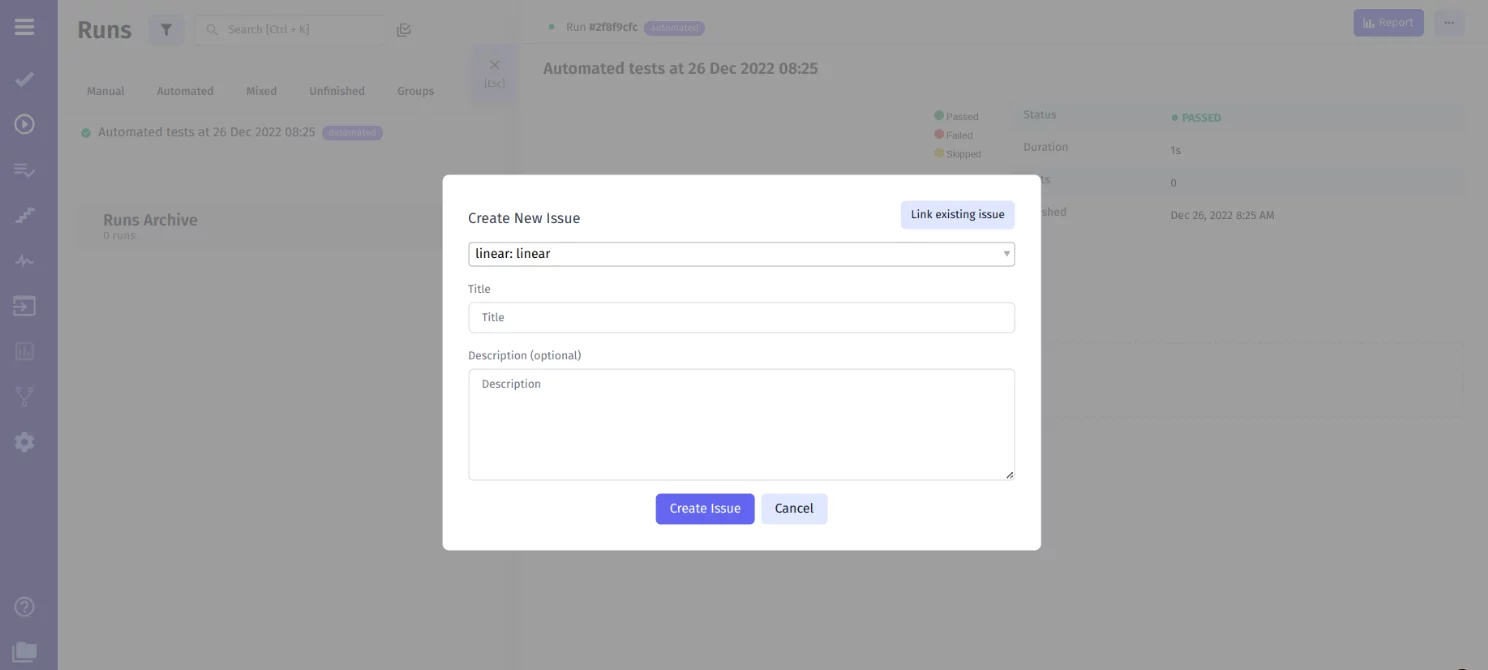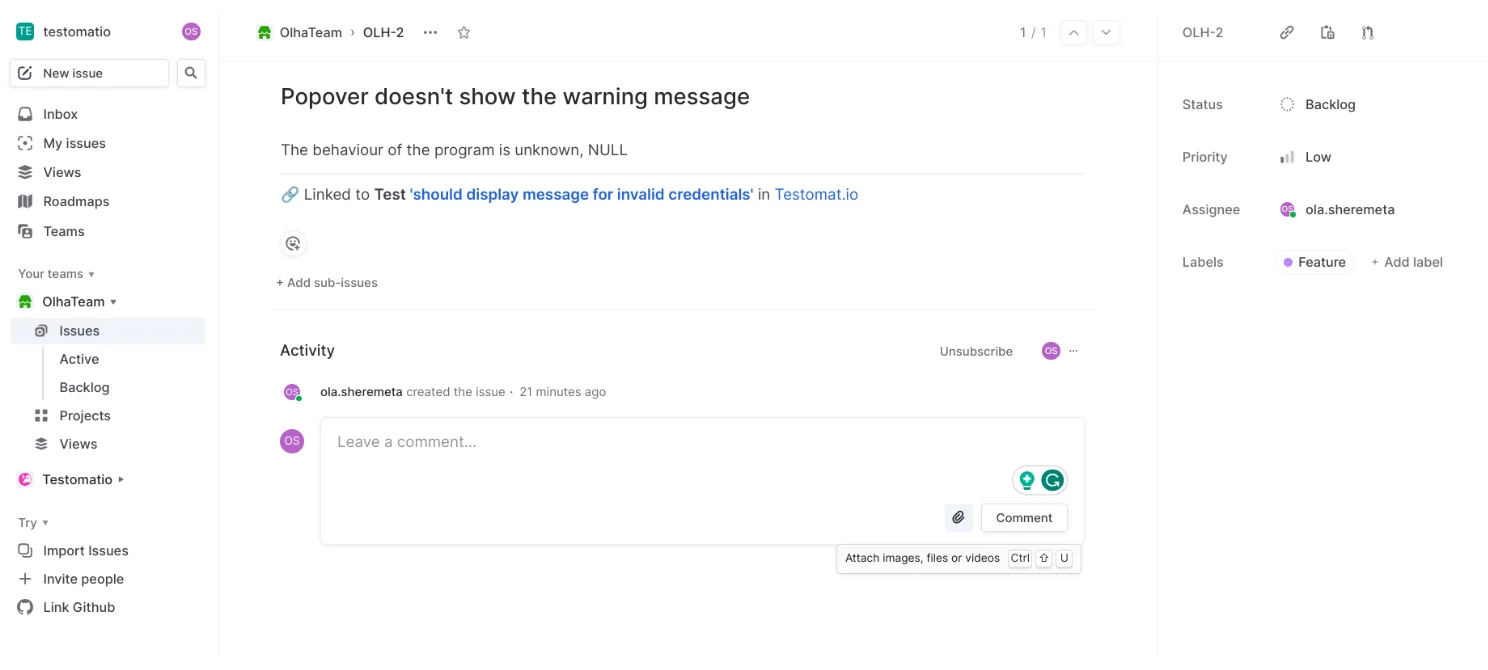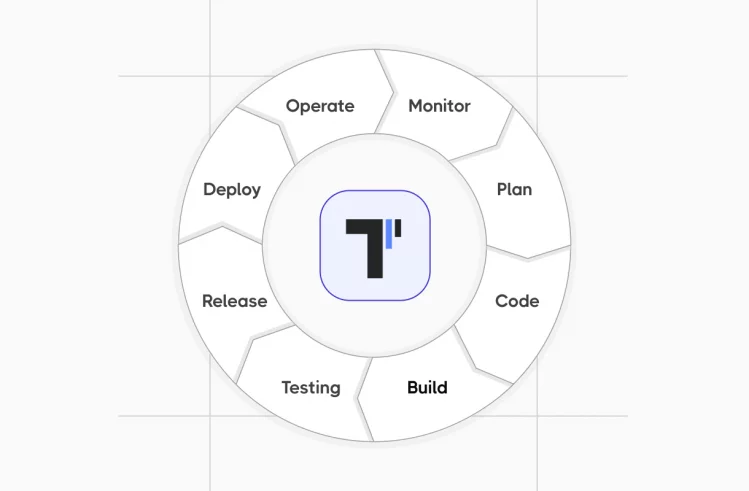For any development team to meet their deadlines and stay on track, incorporating apps for tracking bugs and errors is crucial to meet customers’ wants and needs. It is a strategic practice that impacts the overall success of software development projects. It contributes to timely releases and customer satisfaction as well as helps software engineers and QAs deliver reliable, error-free, and user-friendly software solutions.
Without a good tracking platform for bugs in place, they find it difficult to track the progress of their projects, identify and fix bugs quickly, and provide a quality product to their customers or clients.
Only by investing in robust systems for tracking bugs can software engineering teams provide fully-featured agile software products for users and achieve higher levels of success.
What exactly is a Bug Tracking Tool?
A bug tracking system is a software product that provides software engineers and QAs with the ability to keep track of all the anomalies related to a particular project, as well as their status and resolution. It can help not only identify and resolve anomalies quickly and efficiently but also improve the quality of their apps or websites and meet end-users needs.
There are different types of error tracking systems in the market you can choose from – Jira, Trello, Zendesk, Redmine, Linear, etc. Here we are going to overview Linear app and help you grasp the core features, benefits and other capabilities.
What exactly is Linear?
Relatively new in the market, Linear is known as an issue-tracking app with a sleek and minimalist user interface. It is quite simple to use and doesn’t require a lot of configuration and setup. Available on MacOS, Web, and Mobile, this tool speeds up coordination, communication and collaboration among the development and QA workforce and helps them focus on project development. In addition to that, Linear offers great customization capabilities and can be fully integrated with Github, Gitlab, Figma, Sentry, and Slack.
What are the key features of Linear app?
Each app provides a bundle of features and capabilities to meet different needs. Linear app brings a lot of opportunities to your IT workforce. Let’s take a closer look at them to discover how your software engineers, QAs, designers and all parties involved can profit from using this system when they encounter defects on the project.
- Linear issues. Acting as the core building blocks of the application, new linear issues enable you to initiate new tasks, define various attributes, establish anomalies, note and link them. Furthermore, they help software engineers and QAs manage dozens of work items, including tasks, anomalies, or any other elements that require attention.
- Real-time Sync. With this feature, every member of the IT workforce can access the most up-to-date information about dozens of defects, bugs, and tasks in real time as well as update any bug record. This allows teams to be on the same page, boost collaboration, reduce errors and duplication, and improve overall efficiency in tracking anomalies.
- Cycles. Similar to sprints, this feature allows software engineers and QAs to plan and measure iterative development cycles in one click.
- Projects. This feature allows software engineers and QAs to plan, track, and ship larger pieces of work from start to finish. They can not only define more significant features for future apps or websites but also share important info across multiple teams.
- Roadmap. Having a well-defined big picture allows software engineers and QAs to understand the product’s vision and keep them working toward the same goals. They can not only prioritize tasks, features, and improvements aligned with the product vision but also avoid getting lost in the details.
- Backlog. With this feature, software engineers and QAs can identify and prioritize a list of tasks, link issues, or work items for future development or implementation. In addition to that, they can manage dependencies between backlog items and ensure that all mistakes are automatically closed with no activity after a set time.
- Offline mode. Software engineers and QAs can work in offline mode in any web browser without an internet connection to access and/or make any changes to the app as well as collect feedback.
How to Integrate Linear into Your Testing Workspace
Integrating a tracking tool for anomalies is essential to efficiently manage and track defects throughout software development to meet clients’ requirements. Here’s a step-by-step guide to help you:
#1: Assess Integration Options and Start the Linear Integrations
Our test management tool offers integrations with various project management and tracking tools, including the Linear integration. Details of issue integrations in Docs. Once you have defined your needs and selected Linear as an error-tracking tool, make sure that you can integrate it into your test management system.
When integrating, you should log in to your Linear account by providing authentication credentials and permissions. The personal Access Token you can find on the Linear Menu → My Account → Create API. Once configured, you can perform automated testing or go to manual test execution.
After selecting the execution type, you can create an issue. If the “Create issue” button is clicked, you can start to create a and title it. The title should be clear, understandable and related to the project.
When you fill the details, you can find metadata about this error, including
- test description
- test attachment
- test failures
What’s more, you can view the issue’s attachments and start the resolution process.
#2: Define Labels
If you have different test flows and want to audit outdated test cases, update some test cases, or clean up repositories, it is mandatory to mark them. That’s where the labels feature will be helpful for you.
When created, you should define the scope where the label can be applied:
- All
- Tests
- Suits
- Runs
- Plans
- Steps
In addition to that, you need to define how it will be presented – in a list or in a filter.
You can also apply labels to multiple test cases. You can do this by going to the multiselection mode and making appropriate changes. You can add descriptions to your test cases that are synchronized with the test management system. If you edit the description, it will be labeled as “Out of Sync” in the test case management system only. It means that you see the exact differences between the versions and should check them. If they are correct, you can mark this test case as “Synchronized”. Otherwise, you need to implement appropriate changes and synchronize them with the test case management system.
#3: Create Custom Labels
You can also use custom labels for the mistakes in your project. Simply open an issue and edit its label with the following options:
- Enable Severity
- Enable Type
- Enable Automatable
Within the custom field settings, you can tick “Enable Severity”, for example. The severity levels are used to categorize thousands of mistakes in your project. Common severity levels might include “Blocker,” “Critical,” “Major,” “Normal,” “Minor,” and “Trivial.” You can select test cases and set the level of severity you need:
By leveraging the custom severity option, you can filter and report anomalies based on their severity. This helps software engineers and QAs in prioritizing and addressing critical mistakes first.
#4: Train Your Workforce
When implementing Linear into your development flow, make sure that your IT workforce are familiar with the workspace for tracking anomalies and its core features. You should not only incorporate training on how to create bug reports and use labels and assign issues but also establish communication to keep your workforce informed about issue updates and changes. What’s more, it is crucial to track progress, reassign tasks if necessary, and ensure anomalies are moving through the resolution process as smoothly as possible.
#5: Monitor and Measure
If implemented properly, you should monitor the effectiveness of your bug identification process and measure its progress. In addition to that, you should receive feedback from developers and QAs and keep a tight feedback loop with stakeholders on the bug identification and tracking process. This will help you identify areas for improvement, refine your processes and make them easy, seamless and smooth.
By following these steps, you can integrate Linear workspace aligned with your project’s requirements to improve collaboration and streamline the process of identifying, reporting, and resolving issues. This will lead to higher software quality and a more structured development workflow.
What are the benefits of Linear app?
The use of Linear tool for tracking bug has become a cornerstone of successful software project management. With a multitude of benefits, you can increase the efficiency, quality, and overall success of software solutions. Here are some benefits the software engineers and QAs can reap from:
- Software engineers and QAs can identify and document defects, and record anomalies in the product being developed at an early stage. They can address them and improve the overall quality and reliability of the product reducing the operational costs and effort needed to resolve these mistakes at a later point.
- With a bug proactively identified on time, software engineers and QAs can reproduce the problem consistently and faster resolve it. This prevents products from crashing and delivers a smooth and more satisfying experience to users.
- With a well-defined process for identifying and resolving anomalies, teams can manage and monitor their statuses in a structured way to ensure consistency, reduce confusion, and not miss deadlines.
- Cross-functional teams, such as developers, QAs, BAs, designers, and product managers can better communicate and collaborate as well as resolve anomalies at an early point.
- Software engineers and QAs can analyze bug-tracking data and identify trends and areas of improvement. With this data-driven approach, teams make more informed decisions and reduce the overall complexity of bug resolution.
- Software developers and QAs can overview the reported mistakes and changes made as well as keep on track progress to ensure traceability and accountability in the workflow. Moreover, they can maintain a tight feedback loop when fixing anomalies or resolving technical customer problems.
Best Practices for efficient Linear integrations
In order to have seamless Linear integrations, here are some of the best practices that you can adopt and succeed. Let’s take a closer look below:
- Define objectives and choose the right tool. The first thing the company should consider before implementing any integration is to define the specific goals you want to achieve on the project. What’s more, you should be in the know about the data and processes flowing between the tools and why. Based on this data, select the tool that offers robust integration capabilities and aligns with your team’s needs.
- Have a solid plan for Linear integrations. When it comes to implementing Linear with the test case management system, you should map out the flow to understand how data will flow between these tools. In addition to that, you should make sure that data fields in one tool are correctly mapped to corresponding fields in the other. This helps teams eliminate data discrepancies and ensure the data is always consistent.
- Monitor performance. If implemented, you should continuously monitor the performance of the Linear integrations. In addition to that, you should send alerts to notify your team of any Linear defects or slowdowns in the data flow.
- Educate your IT workforce. Before incorporating Linear integrations, make sure that your team members understand the significance of error-tracking tools and how they fit into their workflows. They should not only learn how to seamlessly move data between tools but also avoid manual workarounds. This results in streamlined and efficient workflows and a more productive environment that eliminates thousands of spreadsheets.
- Focus on outcomes. When integrating error tracking with test management tool, you might focus on tracking and monitoring outcomes rather than a certain task. That’s why the goal is not merely to identify mistakes and assign them but to see to their resolution. All your efforts in tracking mistakes should be directed towards achieving this goal.
Along with the listed best practices for Linear integration, there are certainly more options and methods you should follow to make the process more effective and hassle-free.
Bottom Line: Fostering an Error Tracking Culture with Linear Integration
Effective tracking of anomalies in the software is crucial for any software development project. It is no secret that mistakes have a profound impact on the quality and performance of future apps or websites. They can contribute to security vulnerabilities if not resolved. That’s why it is mandatory to identify anomalies and mistakes at an early point, track them carefully, and ensure that they are resolved in an efficient manner.
What’s more, you should create an error-tracking culture rather than implementing a process. It’s about fostering an environment that values issue resolution, decision-making, constant improvement and happy customers and end-users. Feel free to contact us via email if you have any questions about Linear integrations or just check it out in action.











